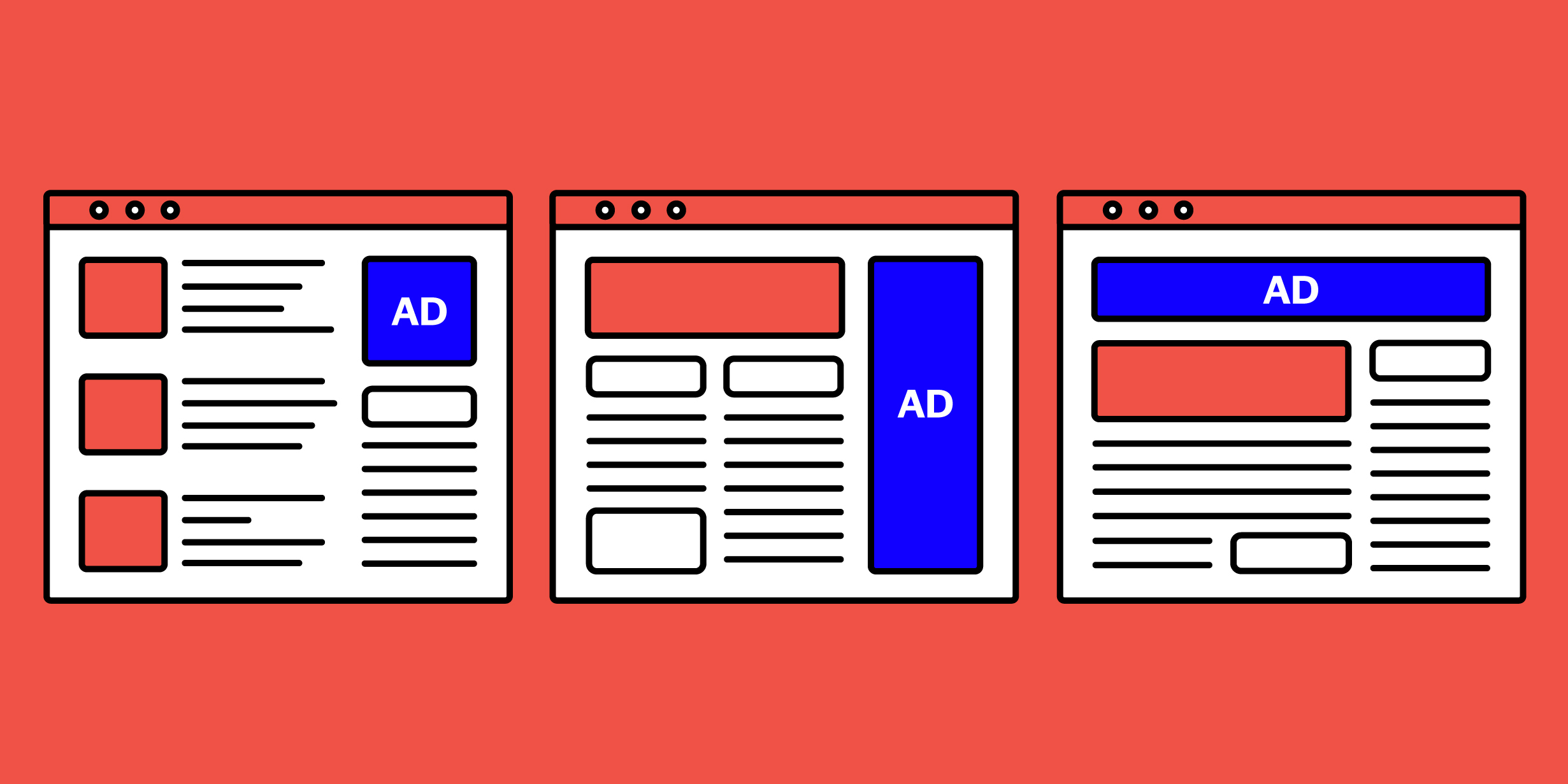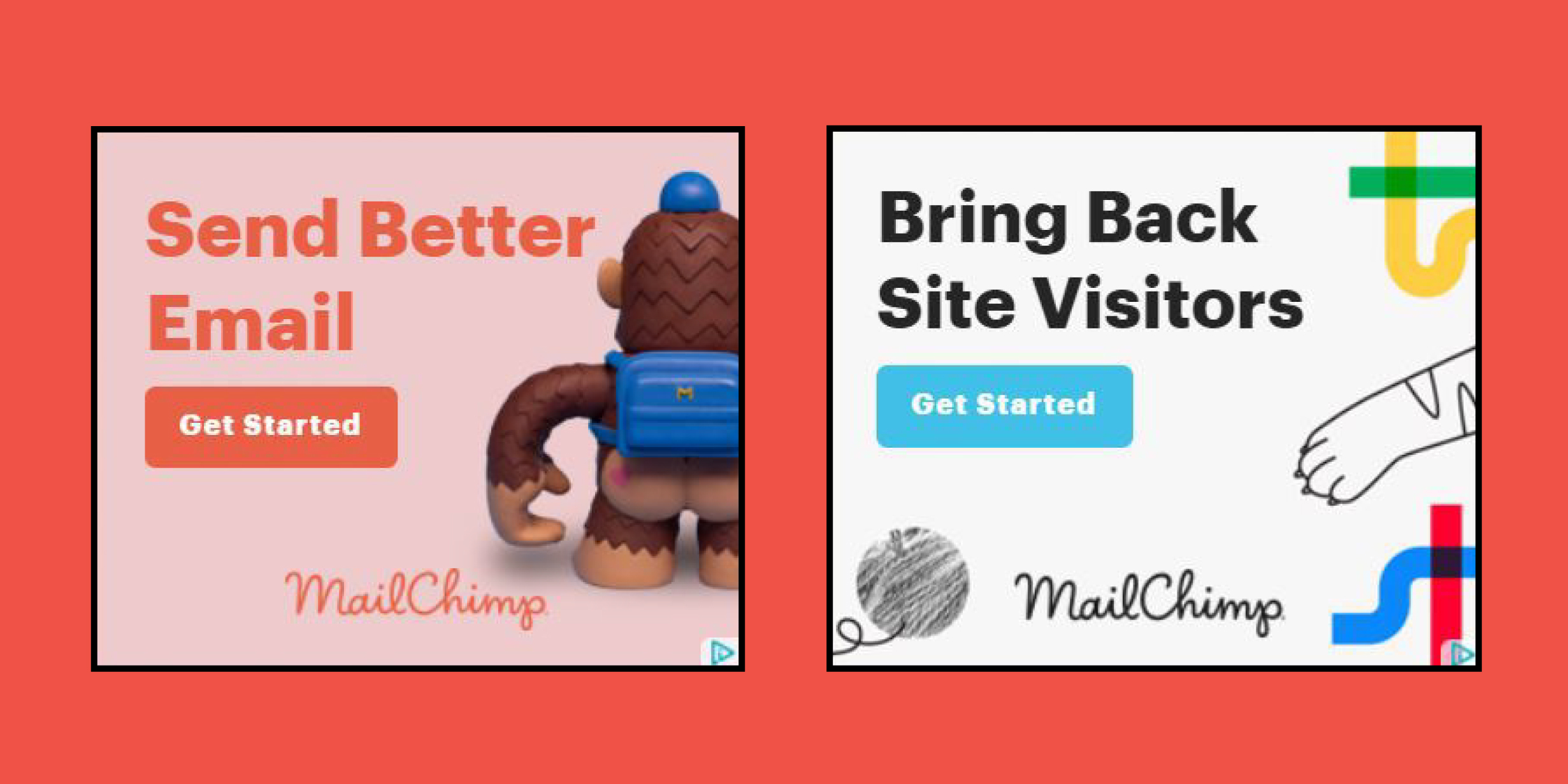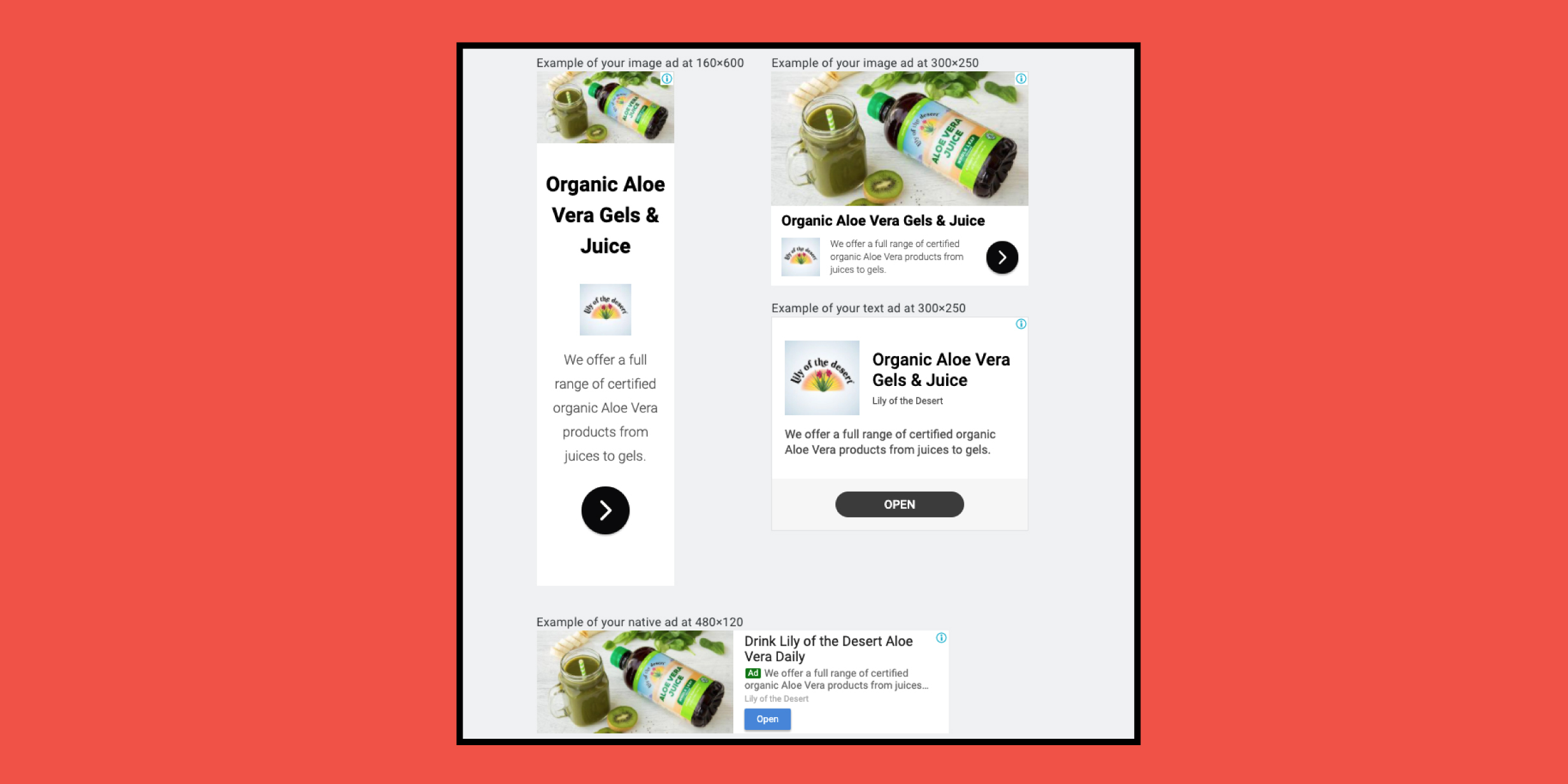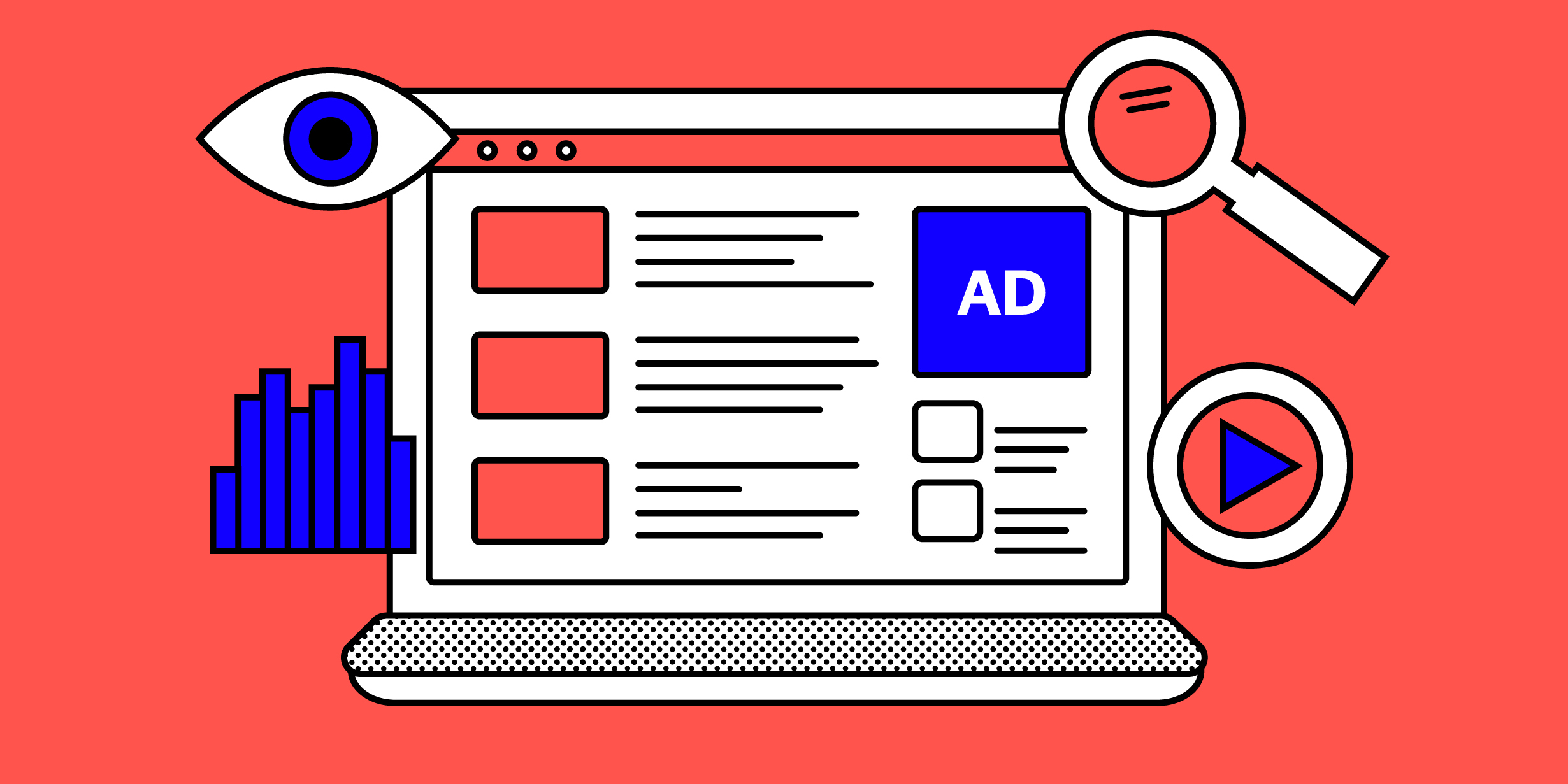Even if you aren’t familiar with display ads, you’ve most likely seen your fair share of them. Whether you’re scrolling through a website, watching a YouTube video, checking your Gmail account, or interacting with apps… you’ve probably even clicked on one without realizing it.
Brands and businesses of all sizes use display ads, or “banner ads”, as a cost-effective tactic to find new potential customers and boost brand awareness.
Display ads are a great way to bring past users back to your website. Not only do they remind users of your brand after they leave, they also create an opportunity for conversion through a shopping cart that was filled out, but not purchased. This is a form of display advertising called “retargeting”.
The challenge with display advertising comes in two parts: first is the creation of visual assets that grab a user’s attention, and second is clear messaging that drives the user to act.
How many times do you scroll past an ad without giving it a second thought? Probably most of the time. However, some ads, when creatively eye-catching and brilliantly targeted, will catch your attention. The ability to stop and engage, at relatively low cost-per-click, is an inbound marketing strategy not to ignore.

Creating A Successful Display Ad
That sounds great and all, but what’s next?
Coming up with scroll-stopping ads and creative messaging isn’t easy. A display advertising campaign involves time, testing, and multiple trial runs to determine what works best for your audience. However, the most successful display advertising campaigns follow these practices.
Branding is Everything
Add your logo to your display ad. Perhaps you are targeting a newer audience, and they are at the beginning of the buyer’s journey with your brand. Having your logo attached to your display ad, at the very least, can boost brand recognition. This is beneficial for beginning a campaign to promote your brand name and services or products.
Determine Responsive or Standard Display Ads
Google offers responsive display ads, which can be a quick and easy option when looking to launch your first display campaign. However, there are benefits to designing your own display ad creative. The greatest benefit is total control over the creative of an uploaded display ad. Through this, you can place the imagery and copy anywhere you want within the ad graphic itself. They also stand out from the page far better than responsive display ads.
Remember, the goal is to increase your brand visibility. This is done by displaying multiple ads in multiple formats per placement on the Google Display Network. These “placements” consist of more than 2 million specific locations that can be targeted, or that your ads can be displayed. This can include specific websites, individual web pages, YouTube, and more.
Maximize Reach with Multiple Ad Sizes
Typically, at each placement, multiple ad sizes are used across the page. Website developers build multiple locations into their websites for ads to display. This helps maximize the potential revenue they can earn from users clicking through these ads. Of course, that means more opportunities for clicks.
Regarding animated and non-animated ads, there are four main categories of dimensions available that most placements support: square & rectangle, skyscraper, leaderboard, and mobile. Most display campaigns utilize these types of placements with specific size dimensions to form what’s known as the “ad set”. You can find more detailed specifications on the uploaded display ads specifications page on Google Ads Help.
Once you have multiple creative assets of varying sizes, your ad set can take advantage of every placement a website has to offer. Thus, your brand is potentially being displayed multiple times on the same page.
Design Ads with the User in Mind
Any decent marketer strives to improve their client’s performance and the customer’s experience. The experience with an ad should be clear, simple, and straightforward — creating an easy opportunity for your audience to take action with your ad.
This starts with a simple value proposition. Put yourself in your target audience’s shoes. What message would convey enough value to you to lift you out of the YouTube video rabbit hole and allow the brand to collect that coveted click?

Use Focused & Straightforward Content
When it comes to ads, it’s important to convey your message as clearly as possible. Use simple language instead of overly complicated industry-specific jargon, or copy with an excess of fluff. Just articulate the user’s pain points and offer a relatable yet tangible value.
A clear call-to-action along the lines of “Learn More” or “Watch Now” can and should personalize the CTA according to your service/product.
Although it can be tempting to advertise various products with one ad placement, focusing on one product or service will help share the message faster than a cluttered ad with multiple focus points.
Design to Catch the Eye & Impress
Last but not least, design banner ads that look good. Use high-resolution images and illustrations to communicate your expertise nonverbally. Evidence shows that users find aesthetically pleasing designs more usable, which can lead to more conversions.
Ads with significant contrast and color from the rest of what might be a busy web page will stand out, compared to designs that blend into the white and gray backgrounds found on most websites.
Additionally, big and bold typography with a supporting product image, illustration, or other design element tends to be the most successful. With limited space and a need to stand out from competing ads and web page content, a professional look that catches the eye, and that conveys trust in the brand, is a must.
Explore Responsive Display Ads
Now that you’re a standard or “uploaded” display ad scholar, let’s discuss those responsive display ads a little more.
When it comes to saving time, responsive ads offer a simple solution that delivers solid results. How? Well, while an uploaded ad is explicitly created with one image, one headline, and one description, a responsive ad allows you to share multiple at once.
If anyone knows your audience better than you, it’s Google. According to the search engine powerhouse itself, “Google uses a machine learning model to determine the optimal combination of assets for each ad slot based on predictions built from your performance history.” By providing this information, Google can combine content to create the best possible ad that’s unique to the user viewing it.

Responsive ads can also be set up by creating a feed of all your products or services. Google will create ads for your brand based on the information collected in that feed. This allows your ad to be highly tailored to your target audience.
Need Help Getting Your Display Advertising Campaign Started?
Creating a high-converting display ad takes planning and expertise. We can help strategize, design, and implement the right display ad strategy and creative that speaks quickly and directly to your audience at a glance. Get started by filling out our handy project form, and we can begin building the campaigns your audience will click on.

